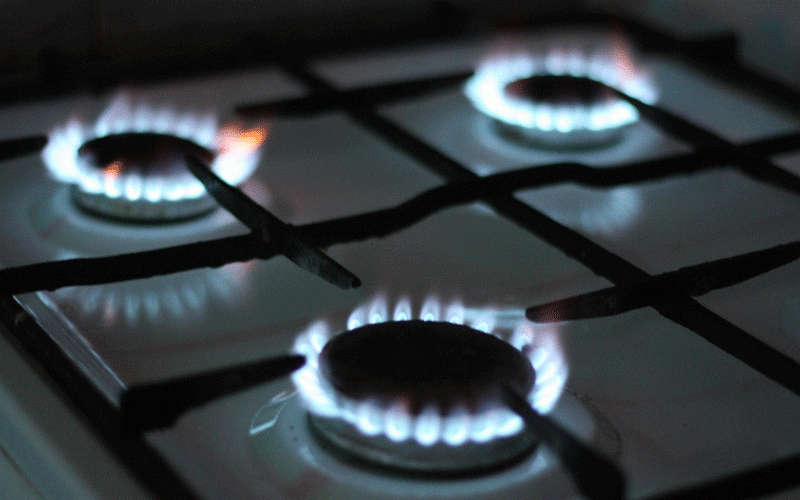
"IT was a bitter winter ...”, So begins one of the chapters in George Orwell’s novel Animal Farm. The same chapter goes on to tell how the animals made frantic efforts to repair a windmill to generate more electricity. Fast forward to 2022, another bitter winter approaches and again the issue of energy is at the centre stage.
Only this time, the Ukraine-Russia conflict threatens to plunge the whole of Europe to its coldest winter in memory. Did Orwell try to warn us to go the renewable energy route in 1945 and we ignored the call? The answer to this is of no relevance now as Europe frantically tries to secure gas and energy to survive the coming winter. The unfolding scenes in the Europe energy crisis have a huge bearing on Africa’s future energy policy, as outlined in this piece.
In good times
Prior to the war, Europe imported as much as 40% of its gas and oil requirements from Russia to the tune of 108 billion euros. In friendlier times, the Nord Stream 1, a gas pipeline that stretches 1 200km from the Russian coast near St Petersburg to North-Eastern Germany was built and opened in 2011 to supply gas to Germany.
The expansion and increasing reliance on Russian gas and oil came under fire from several think-tanks and the US included, but their advice was largely ignored. A second pipeline running parallel to this one, the Nord Stream 2 was due for commissioning but this was terminated after Russia’s recognition of the Donetsk and Luhansk republics in 2022.
The two gas pipelines are estimated to have cost around 25 billion euros. Failure to certify Nord Stream 2 led to the company being declared bankrupt. Now all this investment in the pipelines is at risk since it is highly unlikely that Europe will be keen to use it in the medium to long term.
High-energy bills and financial crisis
Inevitably, the drop in gas and oil supply from Russia has led to record increases in gas prices and possible shortages. The Europe Central Bank reports that in the first two weeks after the invasion, the prices of oil, coal and gas went up by around 40%, 130% and 180%, respectively.
- CCC urged to push for dialogue over reforms
- A peep into Matenganyika’s artistic closets
- The Bioskop Short Film Competition is back
- Mangwe farmers benefit from agric projects
Keep Reading
Gas prices have also driven wholesale electricity prices up in the euro area. Meanwhile, the high-energy costs coming to an economy trying to rebound from the COVID-19 pandemic points to difficult times ahead.
Already there are distress signals across Europe with plans to ration gas on the cards and increased number of people on food stamps in some areas. The euro has fallen to the US dollar for the first time in 20 years and already industry is beginning to make calls for taxpayer bailout, further confirming predictions of a recession.
Working together
In order to avert an all-out energy crisis, Europe has decided on a coordinated approach. The European Commission has adopted a three-point plan based on substitution, solidarity and sobriety. Substitution entails finding alternatives to Russian gas, for electricity production, for heating and industry among others.
The EU countries pledge to work together and demonstrate measures to cut reliance on Russian gas. Finally, under “sobriety”, the EU countries realise the need for clarity of contingent plans and treatment of industrial sectors to avoid disrupting supply chains.
Back to coal?
Some EU countries notably Germany, Austria and France recently announced plans to enable increased coal power generation in the event that Russian gas supplies suddenly stop.
The think-tank Ember, points out that the net additional carbon dioxide emissions from the coal power plants would be approximately 30 million tonnes, representing 1,3% of total 2021 EU CO2 emissions.
Only time will tell how long the use of coal will last though the EU has shown commitment to adhere to the decarbonising targets of 2030.
Failure to adhere to these targets will be a great betrayal to the global south countries that have shelved coal power plants despite possessing huge reserves of coal.
Africa’s situation
Africa is in a different situation as over 640 million people have no access to energy, giving rise to an electricity access rate for African countries at just over 40%, rated as the lowest in the world.
Currently power generation in Africa stands at around 600 TWH. The energy deficit is a result of many factors including inadequate infrastructure, ageing equipment among others. Mckinsey and company estimate that by 2040, Africa’s electricity requirements will be 1600TWH or a capacity of around 345GW.
The same source estimates that southern Africa would require a higher stake followed by west Africa with central Africa having the least.
They further note that Sub-Saharan Africa’s electricity sector will need capital investment of about US$835 billion by 2040 to be able to supply the continent’s growing electricity demand.
Therefore, African governments should be sweating on how to secure US$1 trillion to ensure power security. The Light Up and Power Africa — A New Deal on Energy for Africa launched by the African Development Bank which also estimates investment requirement of US$60 to US$90 billion annually is a step to ensure Africa’s power security.
However, the US$12 billion contribution from the Africa Development Bank spread over five years speaks volumes of the prospects of this initiative.
Conflicts in Africa
On another note, the risk of conflict on energy in Africa is a stark reality. Out of 21 countries at war currently, 14 of them are from Africa compared to only one in Europe.
Despite the numerous challenges and differences with the energy crisis in Europe, there are lessons that Africa may learn from the European energy crisis.
Lessons for Africa
Observations from the European energy crisis point to avoiding the pitfall of ignoring research and advice of accomplished think tanks in the region and beyond.
There is need for Africa to work collectively to achieve energy security. Africa should avoid risking everything on one endeavour and ensure that it diversifies its energy mix and the players in the electricity sector.
The threat of climate change on hydropower plants is a case in point. Given that the majority of people without access to electricity are in rural areas, more attention could be given to mini-grids or off-grid connections.
Africa should accelerate the rollout of renewable energy to reduce pressure on current capacity. The Nigerian grid has had 222 partial and total system collapses from January 2010 to June 2022 as a case in point.
One also observes that conflicts must be kept at a very minimum as the disruptions cause untold suffering to the population. Perhaps the most important lesson is that a stitch in time saves nine.
Given that in developing and emerging markets, annual electricity demand growth tends to be generally higher than GDP growth (typically between 1.2:1 and 2.3:1), and the positive GDP growth rates seen in the region there is high likelihood of demand outstripping supply if there are no urgent measures in place to ramp up electricity production.
Most importantly, Africa should be angling to shed its “Dark Continent” image and be the next global powerhouse exporting excess power to even Europe.
- Mitchell Mahachi is a masters student in climate change management at the Weihenstephan-Triesdorf University of Applied Sciences (HSWT) in Germany. He writes here in his personal capacity.










